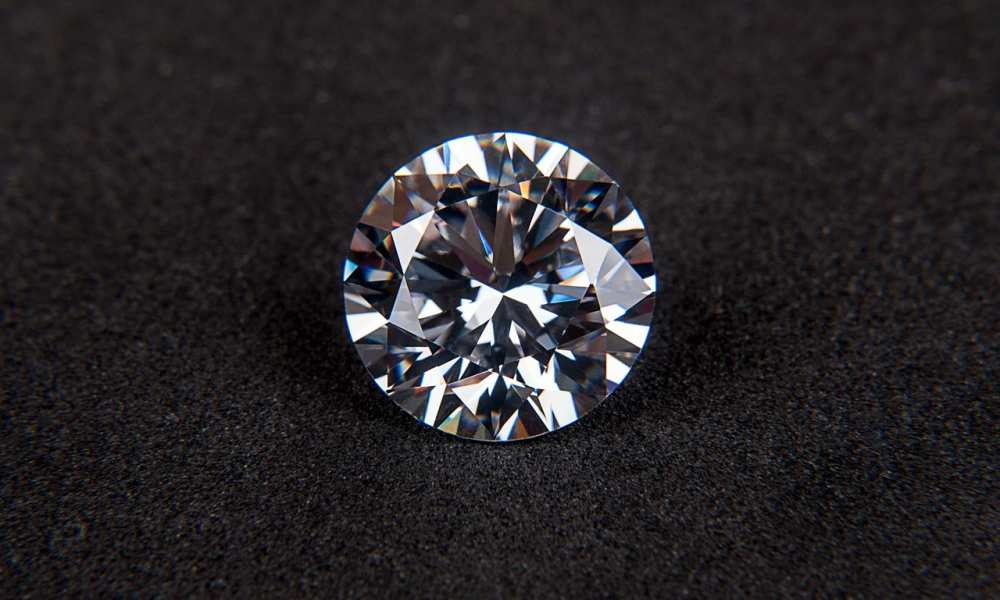Diamonds are rare, beautiful, expensive. They are "girls' best friends" and (not only) boys' good investment. Here is the overview of what should we know about diamonds to make a right choice whatever our purpose is. Part four describes unusual about diamonds.
Gabriel Levin-Cafrir (M.Soc.Sci), second generation diamantaire, graduate of the Center of Gemological Studies under the leadership of one of the leading Graduate Gemologists of Israel - Eli Dori, specialization - Diamond Expert (“Diamond Grading & Evaluating” diploma), at Diamond Exchange, Ramat Gan, Israel. The evaluation of diamonds is based on the G.I.A (Gemological Institute of America) standards. Practiced in Israeli commpany “Keren Or”. Works in jewellery and gemstones sales sphere (family business), consults, does lecturing.
Unusual about diamonds
Diamond Destruction
So, can a diamond be destroyed? By this I don’t mean cracked or broken to pieces (we already know the answer from the “Diamond Hardness” part), the actual question is: can a diamond be “erased” – completely destroyed without any trace? The answer may shock you a bit.
“Diamonds can be burnt, melt or dissolved under extremely high temperature and pressure conditions.” - Komal B. Patil
This what he wrote in this lecture “Can Diamonds Be Melted Or Dissolved” https://sciencestruck.com/can-diamonds-be-melted-or-dissolved
“The strongest allotrope of carbon, the diamond, is an optically isotropic crystal that has its comprising carbon atoms bound to each other in a cubic lattice pattern. This pattern involves the bonding of each carbon atom to four neighboring carbon atoms via strong covalent bonds. The strong bonds between each atom of the crystal renders it extremely hard and strong. A diamond is not indestructible. Under normal conditions of atmospheric temperature and pressure, a diamond retains all its physical and chemicals properties, since the covalent bonds between the carbon atoms require an immensely high amount of energy to be broken. If a high-enough temperature and pressure environment is provided, along with suitable catalysts it is possible to change the physical or chemical nature of a diamond.
Burning a diamond. Diamonds are crystals made up purely of carbon atoms, and carbon is known to react with oxygen to form carbon dioxide. Diamonds don't evaporate at high temperatures - in fact, under normal atmospheric pressure, they don't evaporate at all. However, as French chemist Antoine L. Lavoisier demonstrated, if a diamond is heated from 600 to 800 C° in a pool of liquid oxygen, it is possible to break the carbon-carbon bonds, allowing the atoms to react with oxygen (oxidize) and form carbon monoxide (CO) and carbon dioxide (CO2) gases– the vapors. Since no solid residue is left behind, a diamond in the presence of oxygen can be described as a sublimating substance. This does not take place in the normal atmosphere, since the oxygen concentration in the air is not enough (only 20%) to oxidize the crystal. Instead, the crystal may transform into graphite, which is a more stable form of pure carbon.
Melting a diamond. A diamond has an average melting temperature of 3'550 C° in a vacuum. The ultimate melting point of diamond is about 4,027 C°. If a diamond is heated to that temperature, it may either become charred, will burn off, or show no effect. In a vacuum, it is possible to melt small quantities of diamonds. When the crystals are subjected to super strong magnetic fields, and a pressure a million time the normal value, small amounts of the diamond are observed to melt and liquefy. The strength of the magnetic field and intense pressure induce the necessary thermal energy required for the process. Some researchers have also achieved similar results by utilizing a focused high-intensity laser beam and high pressure conditions. When the pressure is reduced, the molten diamond re-solidifies into a solid crystal. This behavior has prompted scientists to ponder over the possible existence of seas of liquid nitrogen on planets like Neptune and Uranus, as a consequence of intense pressure and abundance of carbon.
Dissolving a diamond.Diamonds does not dissolve in any liquid at room temperature. Concentrated acids, at a very high temperature and pressure, may be able to decompose minute quantities of a diamond. A better job of dissolution is done when a solution of molten sodium hydroxide and sodium nitrate is heated and used. Researchers at the National University of Singapore have discovered a novel way to degrade, etch, or basically dissolve a diamond. It involves coating the crystal with a layer of graphene, which is a one-atom thick substance composed of pure carbon. When the coated crystal is heated to high temperatures in order to bond the two substances, a restructuring and bonding between the two elements can be observed. Since both substances are impermeable, the water trapped between them transform into a supercritical phase, that can corrode the surface of the diamond.”
As you can see, to destroy a diamond you need special conditions, time and efforts. Don’t try do it at home! Am kidding. As for me it is much better to see them shining.
This is it. I hope you found this article interesting and useful. There are so much more interesting facts and research not only about diamonds, but other gemstones that I can’t understand where to get the time for all investigations. But if you are interested in something, you will look for knowledge. The learning is a lifetime process, isn’t it?
Links that are used to write the articles in the series about diamonds:
- https://4cs.gia.edu/en-us/blog/are-diamonds-rare/
- https://www.capetowndiamondmuseum.org/about-diamonds/formation-of-diamonds/
- https://www.gia.edu/diamond
- https://geology.com/minerals/mohs-hardness-scale.shtml
- http://www.modificator.ru/terms/hardness.html
- https://www.sciencedirect.com/topics/engineering/hardness
- https://isopromat.ru/glossary/prochnost
- “The type classification system of diamonds and its importance in gemology” by Christopher M. Breeding and James E. Shigley
- https://4cs.gia.edu/en-us/blog/history-4cs-diamond-quality/
- http://4cs.gia.edu/en-us/blog/fact-checking-diamond-fluorescence-myths-dispelled/
- http://4cs.gia.edu/en-us/blog/diamond-treatments-mean/
- http://4cs.gia.edu/en-us/diamond-treatment/
- http://4csblog.gia.edu/en-us/diamond-care/
- http://4csblog.gia.edu/en-us/blog/holiday-buying-guide-clean-jewelry/
- http://4cs.gia.edu/en-us/blog/how-to-protect-your-diamond-engagement-ring/
- http://4csblog.gia.edu/en-us/blog/how-to-clean-your-diamond-jewelry/
- http://4csblog.gia.edu/en-us/blog/gems-ultrasonic-cleaners/
- http://diamondproguide.com/best-jewelry-steam-cleaner/
- https://sciencestruck.com/can-diamonds-be-melted-or-dissolved
- https://www.nationalgeographic.org/media/diamonds-arent-forever-wbt/

